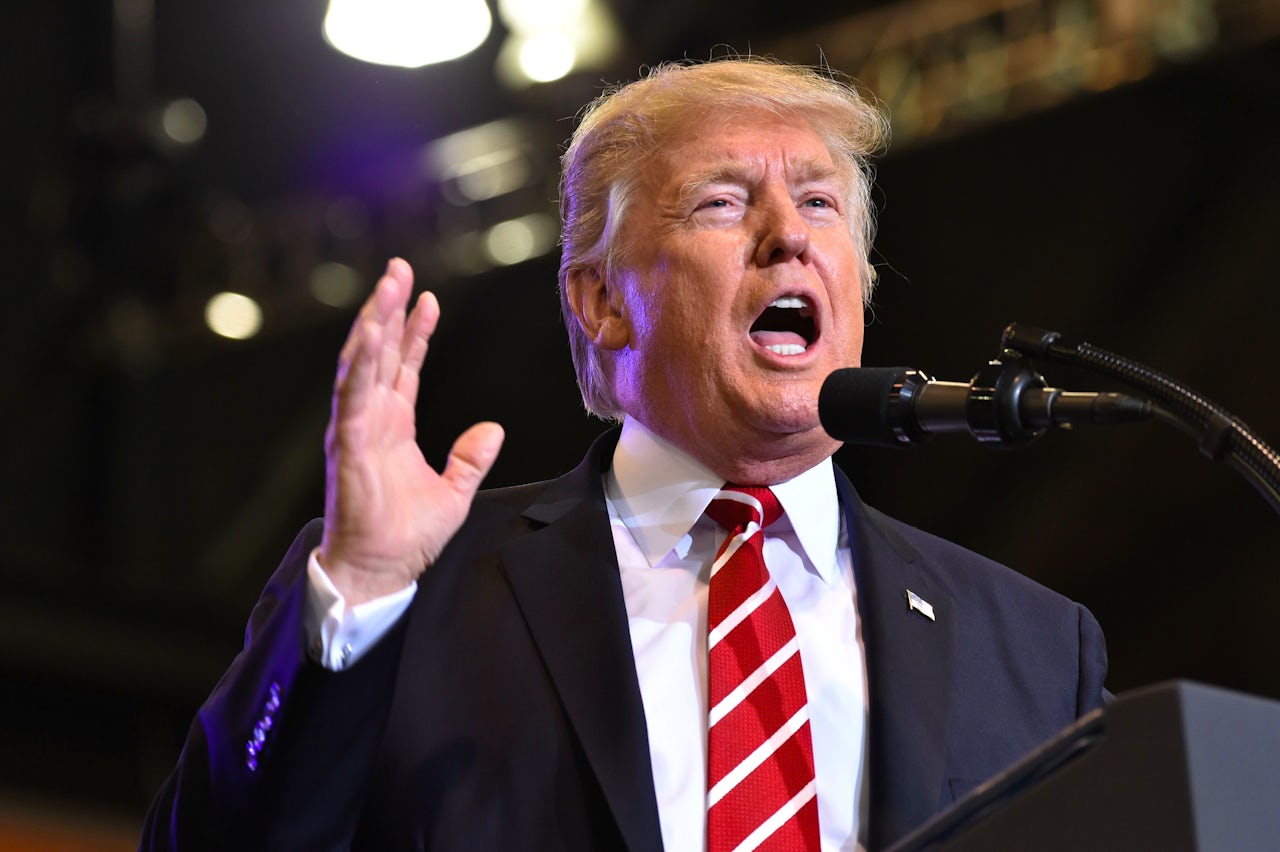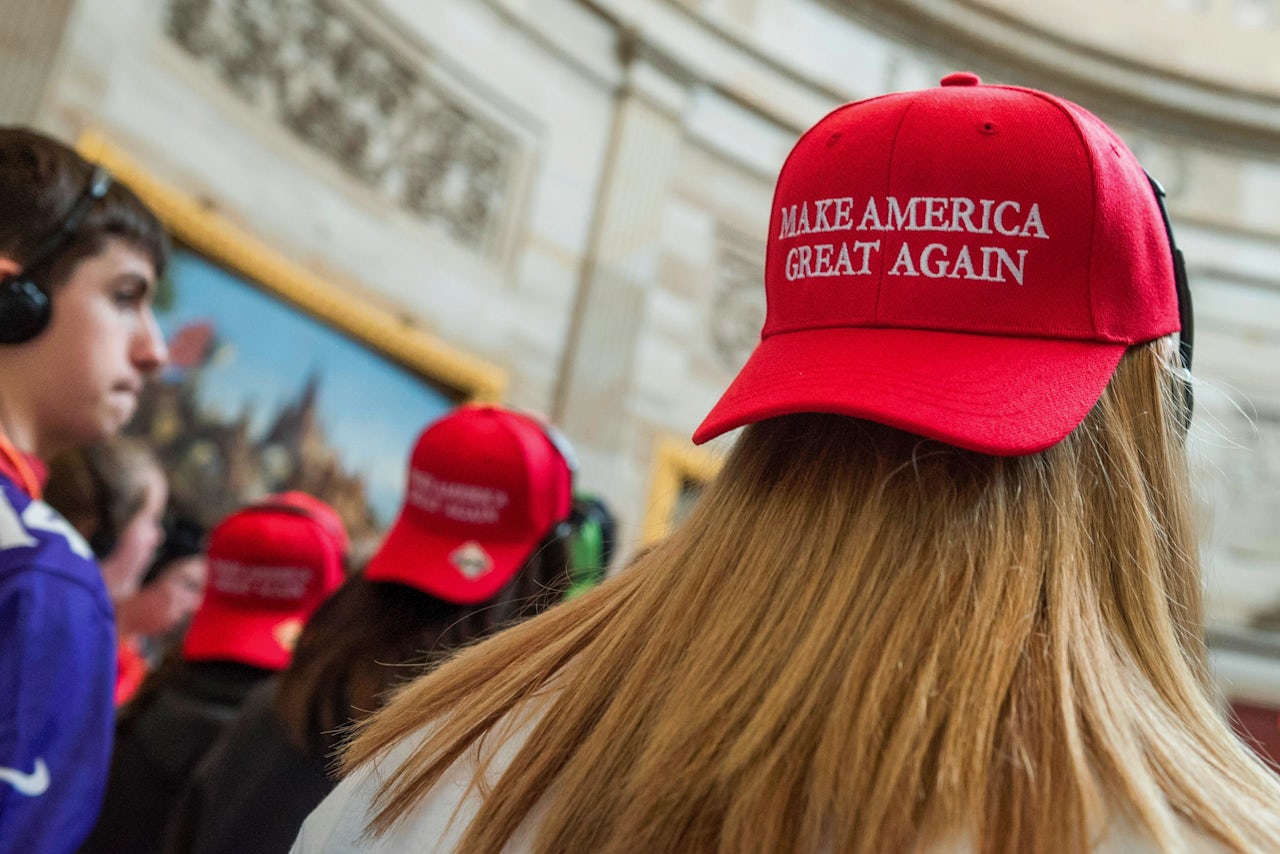On Aug. 12, after an attack by a white supremacist in Charlottesville left one woman dead and 19 others injured, Donald Trump seemingly reluctantly took to his role as healer-in-chief. His comments delivered from his resort in Bedminster, N.J., included a five-word phrase to hammer home how serious he (or his speechwriters) wanted to come across:
"We condemn in the strongest possible terms this egregious display of hatred, bigotry and violence, on many sides."
Critics — both on the left and many fellow Republicans such as Marco Rubio and John McCain — said the comments felt disingenuous and dashed off, and the “on many sides” part made it seem like Trump was tiptoeing around offending the white supremacists who supported him in the election. He made a second round of comments about the violence at a press conference at Trump Tower in Manhattan a few days later:
“As I said on — remember this — Saturday, we condemn in the strongest possible terms this egregious display of hatred, bigotry and violence.”
So we know Trump is against the violence “in the strongest possible terms.” But what, exactly, are those terms?
“As a speechwriter I would only keep that meaningless phrase in a speech if I was ordered to keep my finger off the delete key,” Robert Lehrman, a former speechwriter for Vice President Al Gore who now teaches public speaking at American University, told me in an email. “Bad writers have used that phrase for decades. They think abstract words make you sound smart. They don't.”
The verbal tick of denouncing something “in the strongest possible terms” has been around for a while. It’s hard to say where it first appeared in political speech, but it’s been used since at least 1942, where it showed up in an Allied nations declaration against the extermination of Jews in Europe.
As a speechwriter I would only keep that meaningless phrase in a speech if I was ordered to keep my finger off the delete key.
"The above-mentioned governments and the French National Committee condemn in the strongest possible terms this bestial policy of cold-blooded extermination,” the statement goes. Monty Python used the phrase for laughs in a sketch in 1969, in which John Cleese reads a fake letter of complaint about the (now problematic) “Lumberjack Song.”
“Dear Sir,” a voiceover of Cleese goes. “I wish to complain in the strongest possible terms about the song you have just broadcast about the lumberjack who wears women's clothes. Many of my best friends are lumberjacks, and only a few of them are transvestites.”
But the phrase has bubbled up more frequently in recent years, and it’s by no means just a Trumpism. Bernie Sanders used it after the shooter who injured Rep. Steve Scalise in June was revealed to be a Sanders supporter, saying; “Let me be as clear as I can be — violence of any kind is unacceptable in our society, and I condemn this action in the strongest possible terms.” The University of California at Berkeley used it to denounce violence that broke out before a planned Milo Yiannopoulos appearance in February.
The phrase is a meaningless, empty shortcut around saying something moving, comforting or inspiring. It’s a checkmark to shield yourself from criticism — look, we said we condemned this as much as possible, what else could we do? It’s a fancier linguistic equivalent of saying “infinity plus 1” or adding 10 “verys” to the word “sorry” in an apology. At 31 characters, it fits snugly in a tweet or a headline, and makes for an easily recognizable phrase on cable news. But like sending “thoughts and prayers” after a disaster, it doesn’t actually accomplish anything. Trump’s use of it reveals just how hollow the phrase is.
The phrase is a meaningless, empty shortcut around saying something moving, comforting or inspiring.
On Aug. 22, Trump practically whined that he didn’t get credit for using the phrase when speaking at a rally in Phoenix.
“So I'm condemning the strongest, possible terms, ‘egregious display,’ ‘hatred, bigotry and violence,’ ” he told the crowd. “OK, I think I can't do much better, right? OK.”
David Mark, a longtime Washington journalist and co-author of the book Dog Whistles, Walk-Backs, and Washington Handshakes: Decoding The Jargon, Slang, and Bluster of American Political Speech, pointed out to me that Trump immediately contradicted himself anyway when he added the “on many sides” tag (which reportedly was ad libbed).
“He’s condemning white supremacists, neo Nazis etc. in ‘the strongest possible terms,’ but then he’s creating a moral equivalency with other protesters,” Mark said. “That’s not really condemning in the strongest possible terms.”
Trump seems to have no interest in becoming a great orator, but he is an undeniably effective showman, prone to buzzwords and exclamations over something original. It’s possible his speechwriters employed the phrase because of its neutral familiarity, so pundits wouldn’t have to parse the actual terms he used.
Mark said that in contrast, Sanders’ use of it seems somewhat more genuine.
“He’s not equivocating, he’s not saying ‘I condemn this in the strongest possible terms but this guy was for single payer health care and he agreed with me on other issues,'” he said. “He said ‘I don’t want anything to do with this guy.’”
So what should Trump have said instead of hinting at abstract “strongest possible terms?” Lehrman, a veteran speechwriter, has a suggestion:
“Trump would have been better off saying something like, ‘Neo-Nazis? They aren't worth the yarmulkes my Jewish grandchildren wear to synagogue.’���
Even if that’s not exactly comforting, at least it’s original.

